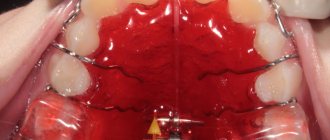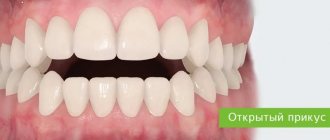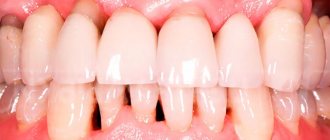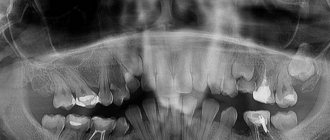When carrying out diagnosis and treatment, it is necessary to establish the location of the damage, the degree of stenosis and its causes. Therefore, patients are prescribed a wide diagnostic program, as well as treatment methods - today they are varied and effectively eliminate the problem.
Most often, the disease affects extracranial vessels, but pathology of intracranial arteries also occurs. This condition is responsible for half of the clinical cases of cerebral ischemia and about 30% of strokes. There are complete and incomplete obstruction (blockage) of the vascular lumen, which lead to disruption of the blood supply.
Normally, the common carotid arteries arise: the left one from the aortic arch, and the right one from the brachiocephalic trunk. They are directed vertically and are located on either side of the cervical spine. Next, it divides into the external and internal carotid arteries. The branches of the arteries supply blood to the intracranial parts, parts of the face, and organs of the head and neck.
General information
Vascular occlusion is a blockage (more often of arteries than veins), which is characterized by a pronounced decrease in the speed and quality of blood flow. Occlusion can cause necrosis and, as a result, lead to death.
The pathology is quite common and can affect the organs of visual perception, the central nervous system, limbs and great vessels. sepsis and peritonitis develop . Abdominal ischemic syndrome develops against the background of a lack of adequate blood circulation in the digestive tract. The pathology is associated with occlusion of the unpaired visceral branches of the abdominal aorta - the celiac trunk and mesenteric arteries (superior, inferior). Abdominal toad can develop under the influence of both internal ( thrombosis ) and external factors (traumatic occlusion).
What is an occlusive dressing?
This method of sealing the lesion is used for wounds that require maintaining sterile conditions and protection from the external environment.
Applying an occlusive dressing to the knee joint requires certain skills and technique:
- cover the wound surface with sterile gauze;
- Place the top of the scarf on the thigh area and wrap it around the waist;
- bend the bandage at the base by 2 cm;
- cross the ends under the thigh, tie knots on the thigh;
- Throw the top over the knot formed and then pass it under the knot.
Conclusion
Malocclusion is not only an aesthetic, but also a physiological problem of the dental apparatus. Ignoring the distal anomaly can worsen the quality of life and even cause some diseases, including the digestive tract due to improper chewing of food.
People with distal occlusion suffer from diction problems. Their TMJ function is disrupted. In addition, dental treatment in such patients is also more difficult, and the teeth are more susceptible to carious lesions.
Therefore, if you suspect distal occlusion, you should immediately go to the doctor. A child can be taken for an appointment immediately after the appearance of baby teeth, that is, from about 3 years old.
Pathogenesis
When the blood thickens, there is an accumulation of fibrin in its composition, which leads to thrombus formation . Venous formations are characterized by constancy - they are located in one area and clog the vessels of the extremities, leading to necrosis and gangrene . Arterial formations are characterized by migration; they often break away from the original source and disrupt the blood supply to large organs, provoking the development of stroke , heart attack and other dangerous conditions.
Diagnosis of pathology
In making a diagnosis, an important role is played by the analysis of medical history: the patient has systemic, inflammatory, cardiovascular diseases, metabolic diseases, eye injuries, other vascular accidents (myocardial infarction, stroke, superficial or deep thrombosis of the leg veins, obliterating endarteritis, etc. ).
The necessary diagnostic examination includes: examination of the fundus, contrast radiography of retinal vessels, laboratory tests. Visometry during occlusion reveals a sharp decrease in visual acuity, which can vary from 0.02-0.1 to 0. The degree of vision loss is directly dependent on the level of occlusion, as well as the size of the ischemic area.
Perimetry reveals defects in peripheral vision - scotomas (sectoral or central, which correspond to the zone of retinal ischemia), as well as concentric narrowing of the visual field.
Biomicroscopy makes it possible to draw a preliminary conclusion about the degree of occlusion. In this case, incomplete occlusion is determined by an afferent pupillary defect (the so-called Marcus-Gunn pupil); total occlusion - a reaction to light that is absent or sharply reduced.
Visual examination of the fundus during ophthalmoscopy reveals swelling, loss of transparency, pallor of the retina and optic disc. Particularly noticeable against this background is the central fovea of the macular region, which has a bright color, since the choroidal blood supply is preserved (cherry pit syndrome). The retinal arterioles are narrowed and have an uneven size. In the first days of development of occlusion, emboli are sometimes visible in them.
Fluorescein angiography clarifies the location of the thrombus or embolus and determines the degree of blockage of the vessel. In this case, radiographic signs of occlusion are a slowdown in blood flow or its segmental nature in the retinal arterioles, as well as the symptom of “vascular breakage” when the branches of the central nervous system are obstructed.
Electroretinography data during occlusion are characterized by a decrease or absence of the amplitude of the recorded wave oscillations, which indicates the death of ganglion cells, with choroidal ischemia.
Specific diagnostics for blockage of the central retinal artery are carried out by performing ultrasound scanning of the vessels of the eye, optical coherence tomography, laser scanning tomography of the retina and tonometry.
Among the necessary laboratory tests, a mandatory coagulogram and lipid profile, as well as blood culture (if there is a suspicion of a bacterial embolism).
Duplex scanning of the carotid arteries and ultrasound of the heart are also necessary. If there are indications, the patient is referred for examination to a cardiologist, vascular surgeon, rheumatologist, endocrinologist, hematologist, or infectious disease specialist.
Classification, types of occlusion
It is customary to distinguish between arterial and venous occlusion.
Types of occlusion by localization:
- Occlusion of mesenteric vessels . It is characterized by an acute circulatory disorder in the mesenteric vessels, which inevitably leads to intestinal ischemia. As a result of thrombosis, the trophism (nutrition) of the intestinal walls is disrupted, and an acute inflammatory process develops, including peritonitis .
- Occlusion of cerebral vessels. The gradual growth of cholesterol plaques in volume can lead to complete blockage of the vessels supplying blood to the brain. The vessels lose their elasticity and a blood clot forms at the site of attachment of the cholesterol plaque as a result of platelets adhering to the damaged vascular wall.
- Occlusion of the arteries of the lower extremities. In this case, a sharp closure of the lumen of the peripheral artery and the development of an acute form of ischemic syndrome are characteristic. Such changes lead to disruption of trophism and nutrition of the lower extremities, paralysis and even gangrene . With occlusion of the femoral artery, extensive circulatory disorders develop not only in the lower extremities, but also in the pelvic organs, which can pose a real threat to the life and health of the patient. Both the superficial (SFA) and deep femoral artery can be affected.
- Occlusion of cardiac vessels. Damage to the coronary arteries is very common. When the supply vessel is completely blocked, irreversible consequences develop in the form of necrosis - myocardial infarction . ischemia develops , which manifests itself as signs of angina pectoris . The blockage can occur due to a blood clot or atherosclerotic plaque. With long-term, chronic occlusion, bypass pathways are formed - collaterals, through which nutrients are supplied. In 98% of cases, the coronary arteries are affected by atherosclerosis .
- Occlusion of the subclavian artery. As a result of blockage, ischemia occurs not only in the upper extremities, but also in the brain. Dizziness , weakness in the arms, problems with speech and visual perception appear The consequences of occlusion of the subclavian arteries are severe.
- Occlusion of the carotid artery. There is both complete and partial blockage of the vessels that supply blood to the brain. Occlusion of the internal carotid artery, which nourishes and supplies the brain and is responsible for intracranial circulation, is rare. Damage to the common carotid artery can lead to problems with visual perception.
- Occlusion of the iliac artery. The first manifestation of the lesion is numbness in the legs, fatigue, ischemia of the legs, and the appearance of pain when walking. Gradually, damage manifests itself in the functioning of the pelvic organs, impotence , and the functioning of the abdominal organs is disrupted.
- Occlusion of the eye or occlusion of the retinal artery. It is extremely rare. It is characterized by a completely asymptomatic course and a sudden deterioration in vision up to complete blindness.
Occlusion in dentistry
In dentistry, occlusion is closure, i.e. the most complete and dense contact of the chewing surfaces with each other. In simple words, dental occlusion is the relationship of the jaws relative to each other.
The occlusal surface of the tooth is that part of the tooth surface that is located from the deepest part of the central fissure to the top of the cusps.
6 keys of occlusion according to Andrews
Andrews is credited with formulating his own theory based on crown morphology and evaluating 120 models with “ideal” occlusion in orthodontically untreated patients. He developed rules (keys) for the relationship of a single tooth to both the adjacent and the antagonist tooth, taking into account its position.
- Key 1 – ratio of painters;
- Key 2 – mesiodistal type (crown angulation);
- Key 3 – torque and inclination of tooth crowns;
- Key 4 – rotation;
- Key 5 – contact point;
- Key 6 – Spee curve.
Central occlusion
The definition includes other names:
- intertubercular contact;
- maximum closure of teeth;
- intertubercular contact position;
- intercuspation.
Central occlusion determines the position of the lower jaw, which is characterized by:
- uniform, symmetrical contraction of the muscles that raise the lower jaw;
- the central position of the heads of the temporomandibular joint in the articular fossae;
- maximum fissure-tubercle contacts of the dental rows.
Dental signs of central occlusion:
- Between the teeth of the lower and upper jaws there is the most dense tubercle-fissure contact.
- Each tooth intersects with two antagonists. The only exceptions are the lower central incisors and upper third incisors.
- The midlines between the central lower and upper incisors are located in the same sagittal plane.
- The lower teeth overlap the upper teeth by no more than a third of the length of the crown in the frontal region.
- The cutting edge of the lower incisors contacts the palatal cusps of the upper incisors.
- The upper first molar occludes the 2 lower molars, covering two-thirds of the first molar and one-third of the second.
- The buccal cusps of the lower teeth overlap the buccal cusps of the upper teeth in the transverse direction.
You can learn more about occlusion in dentistry in the book “Functional Occlusion” by Peter Dawson.
Treatment methods for femoral artery occlusion
With limited occlusion, the body can compensate for the blood circulation of the limb using blood flow through the lateral branches of the arterial system (collateral circulation). In this case, conservative treatment is possible.
With increasing severity of ischemic symptoms, intermittent claudication occurring after less than 100 meters of walking, pain at rest, it is necessary to resort to surgical treatment. Such symptoms mean that circulatory compensation is insufficient, and this threatens the development of ulcerative-necrotic changes, gangrene and loss of limb.
Surgery
In the surgical treatment of occlusion, depending on the area of artery damage, the following are used:
- endarterectomy (removal of atherosclerotic deposits from the lumen of the artery);
- femoropopliteal bypass surgery;
- femoral-tibial bypass (if there is concomitant occlusion of the popliteal artery).
Make an appointment Do not self-medicate. Contact our specialists who will correctly diagnose and prescribe treatment.
Rate how useful the material was
thank you for rating
Causes
Most often, occlusion develops as a result of embolism, blockage of a blood vessel by a dense formation. This process can develop as a result of:
- Infectious disease . In this case, the blood flow is blocked by inflammatory-purulent blood clots or the accumulation of a large number of pathogenic microorganisms.
- Air embolism . It develops as a result of an air bubble entering the systemic bloodstream. It is determined after traumatic damage to a vessel or after an incorrectly performed injection.
- Fat embolism . As a result of metabolic , fat particles accumulate and a fat clot forms from them.
- Arterial embolism . Thrombi form on the valve apparatus of the heart and are characterized by instability and mobility, which can lead to separation of thrombotic masses and blockage.
Occlusion of the vessels of the neck and coronary arteries is formed in the area of their branching or narrowing.
Causes of thrombosis:
- malignant neoplasms;
- atherosclerosis;
- traumatic injuries;
- aneurysms;
- thromboembolism.
As a result of traumatic damage to muscle tissue and the skeletal system, compression occurs and blood flow is blocked.
Reasons for development
The causes of distal occlusion can be correctable or non-correctable . In the first case, the development of the anomaly can be prevented if risk factors are eliminated. In the second case, it is impossible to influence the causes. In most cases, prognathic occlusion develops due to a combination of different risk factors, which include:
- 1. Genetic changes . In more than half of clinical cases, genetic predisposition plays a decisive role in the development of the anomaly. And exposure to other risk factors only aggravates the situation.
- 2. Disturbance of intrauterine development of the fetus . Any problems with the mother’s health, exposure to unfavorable external factors can lead to the fact that the newborn already has developmental anomalies, in particular problems with bite.
- 3. Incorrect breastfeeding, thumb sucking . Using bottles with openings that are too wide or not properly latching on to the breast leads to the fact that the lower jaw does not develop enough. Bad habits can aggravate the situation: sucking pacifiers, fingers or other objects.
- 4. Carious lesions or untimely loss of baby teeth . Both problems negatively affect the formation of a correct bite and jaw development.
- 5. Childhood diseases . General diseases of the child can also affect the growth of the jaws and the position of the teeth: problems with the respiratory system, systemic autoimmune diseases, rickets, deficiency of nutrients.
Development of distal occlusion in children as a result of thumb sucking:
It is not always possible to avoid the formation of a distal bite, even if you try to eliminate all of the listed risk factors. If a problem is detected, it needs to be corrected as soon as possible.
Symptoms
Against the background of damage to the brachiocephalic vessels, there is a decrease in performance, weakness and dizziness . The brachiocephalic trunk is responsible for the blood supply to the soft tissues of the head and the brain. If the left artery is additionally involved in the pathological process, then the clinical picture worsens significantly. Main manifestations:
- pale skin;
- nausea;
- headache;
- pain during physical activity;
- confusion;
- paraplegia;
- swelling and development of necrosis;
- burning sensation or numbness;
- deterioration of visual perception;
- hallucinations;
- difficulty breathing, swallowing;
- speech disorders;
- cardiopalmus;
- absence of pulse in the affected area.
If any of the above symptoms appear, it is necessary to conduct a thorough analysis and diagnosis to identify the true cause and subsequently prevent the development of severe complications.
Peripheral artery occlusive disease: what can we do for the patient today?
National Medical University named after A.A. Bogomolets, Kyiv
Lower extremity peripheral arterial occlusive disease (LOAD; obliterating atherosclerosis of the arteries of the lower extremities) is an important and very common manifestation of systemic atherosclerosis, which leads to a significant limitation in the ability of patients to move, a decrease in their quality of life, and is associated with a high risk of cardiovascular morbidity and mortality [ 1]. It should be noted that according to the modern definition given in the practical guidelines of the American College of Cardiology (ACC) and the American Heart Association (AHA) (2005), the term OBPA refers to atherosclerotic lesions not only of the arteries of the lower extremities, but also of other peripheral vessels, in particular arteries , supplying blood to internal organs (with the exception of the coronary arteries) and the brain [2]. The prevalence of OBPA increases with age, and in people of older age groups without concomitant endocrine pathology, according to individual epidemiological studies, varies quite widely (from 2.5% in the group of people under 65 years of age to 18.8% in the group of people over the age of 70 years), averaging about 12% [1, 3, 4, 8]. The prognosis for patients with ABPA of the lower extremities is generally unfavorable: among patients with intermittent claudication (IC), the mortality rate is 3–5% per year, among patients with critical ischemia of the lower extremities - more than 20% per year [13].
How do you diagnose ABPA, or how often do you measure your patients' BP in their legs?
Unfortunately, in real clinical practice, underdiagnosis of OBPA is still observed. It would seem that the wariness of practicing physicians regarding cardio- and cerebrovascular pathology, which is based on atherosclerosis (coronary heart disease (CHD), myocardial infarction, ischemic stroke), is already quite high. The actions of healthcare professionals aimed at its prevention, timely diagnosis, adequate treatment and rehabilitation of patients have already been crowned with significant success, especially in developed countries. Surprisingly, OBPA, the development of which is based on the same systemic atherosclerotic process, has, unfortunately, not yet become the subject of such close attention of practicing primary care physicians. At the same time, its medical and social significance is no less - this is an insidious disease, which has been subclinical for many years, both in itself significantly reduces the quality of life of patients and is characterized by high rates of disability and mortality, and is a very accurate “marker” of a high risk of major cardiovascular diseases. - and cerebrovascular events (fatal and non-fatal myocardial infarction, ischemic stroke). It is characteristic that the relative risk of cardiovascular death in OBPA does not depend on the presence of manifestations of coronary or cerebrovascular insufficiency in patients [9, 10]; the severity of ABPA closely correlates with the risk of acute myocardial infarction, ischemic stroke and vascular death [2, 11].
Meanwhile, diagnosing OBPA does not present any significant difficulties and is actually accessible to any doctor! The most important criterion for diagnosing OBPA and an indicator of the severity of this disease is the so-called ankle-brachial index (ABI) - the ratio of systolic blood pressure (SBP) determined at the ankle (on the a. dor-salis pedis and posterior tibial artery), and SBP on the arm (on the brachial artery). To determine ABI, a doctor can use either a conventional blood pressure measuring device or an ultrasound machine. It is important to remember that measuring SBP in both legs and assessing ABI should be done after the patient has rested for 10 minutes in a supine position. Normally, the ABI is 0.91–1.30 ; the clinical diagnosis of OBPA of the lower extremities can be established when this indicator decreases to <0.9. When the ABI decreases <0.4, the patient is diagnosed with severe OBPA of the lower extremities. In some cases, ABI in OBPA is within the normal range, but after physical activity it decreases by 20% or more. The lower the ABI, the higher the risk of life-threatening cardiovascular and cerebrovascular outcomes. Mortality among patients with severe ischemia of the lower extremities, according to some authors, reaches 25% per year [5]. The importance of routine assessment of ABI and identification of asymptomatic course of ABPA in all patients with high cardiovascular and cerebrovascular risk is also evidenced by the results of recent clinical studies performed in accordance with the principles of evidence-based medicine. Thus, in a clinical study involving 747 patients diagnosed with ischemic stroke or transient ischemic attack (TIA), the results of which became available online in January of this year [12], it was shown that a decrease in ABI <0.9 was observed in 18.1 % of such patients and significantly correlates with age over 60 years (p < 0.0001), as well as with a history of previous ischemic events, including coronary artery disease (p = 0.001), atherosclerotic cerebral vascular lesions (p = 0.002) and atrial fibrillation (p = 0.036). The authors of this study conclude that it is advisable to determine ABI in all patients with ischemic stroke, as this will help not only to timely diagnose ABPA, but also to identify a group of patients at particularly high risk of recurrent cerebrovascular accident and other vascular complications.
The most important clinical manifestation of OBPA of the lower extremities is PC, which is observed in approximately every third patient with this form of atherosclerosis. HL is characterized by pain in one or both legs when walking, which can significantly limit the patient's ability to move, but is usually significantly relieved by rest. In addition, with OBPA, cramps and severe weakness in the legs are often observed, also provoked by walking. As a rule, PC develops quite slowly. Its severe form with severe ischemia of the lower extremities (severe pain at rest, trophic ulcers, gangrene) is observed in only 5–10% of cases, but is associated with a very high risk of losing a leg. However, in more than half of patients with OBPA, typical PC is not detected. The disease is manifested in them only by a decrease in ABI (0.41–0.90), rapid fatigue when walking, heaviness in the lower extremities and a decrease in the quality of life. Thus, in most cases, OBPA manifests itself mainly as functional impairments leading to limited mobility of patients [1]. It has been shown that symptomatic forms of OBPA are only the “tip of the iceberg”: the number of patients with asymptomatic disease diagnosed using non-invasive methods is 3–4 times higher than the number of those with PC [13].
Focus on high-risk patients
According to modern concepts, the main risk factors for the development of OBPA include age over 40 years, male gender, smoking and diabetes mellitus (DM). According to the large multicenter PARTNERS study [6], which included a total of 6979 patients, among people over 70 years of age, as well as in a group of people aged 50–69 years who smoke or have diabetes, the prevalence of OBPA (assessed on an outpatient basis using definition of ABI) reaches 29% - that is, this pathology is noted in almost every third person. The presence of diabetes significantly increases the incidence of OBPA - if among people with normal glucose tolerance the prevalence of OBPA is 12.5% of cases, then with its impairment and diabetes it reaches 19.9 and 22.4%, respectively [7]. Other important risk factors for the development of OBPA are hyperlipidemia, arterial hypertension (HTN), hyperhomocysteinemia and increased plasma C-reactive protein (CRP) levels [2]. The characteristic profile of these factors, the systemic nature of atherosclerotic lesions in combination with a high risk of ischemic vascular accidents serve as the basis for carrying out measures for the secondary prevention of atherothrombotic complications in OBPA, including aggressive lipid-lowering therapy, treatment of diabetes and hypertension, and the prescription of antiplatelet agents. Unfortunately, until now, secondary prevention for OBPA, in particular, lipid-lowering and antiplatelet therapy, is carried out much less frequently than, for example, for ischemic heart disease, although its need for this disease is no less [1].
According to the ACC/AHA recommendations (2005), a detailed clinical examination of the lower extremities with determination of peripheral arterial pulsation and ABI assessment should be mandatory for all persons at high risk of developing ABPA. These include [2]:
• patients under the age of 50 years with diabetes or other risk factors for the development of atherosclerosis (smoking, dyslipidemia, hypertension and hyperhomocysteinemia);
• persons aged 50–69 years with a history of smoking and diabetes;
• persons aged 70 years and older;
• patients with characteristic clinical symptoms of the lower extremities that occur during physical activity (PE) or ischemic pain syndrome that occurs at rest;
• patients with abnormal pulsation indicators of the arteries of the lower extremities identified during physical examination;
• patients who have already been diagnosed with atherosclerotic lesions of the coronary, carotid or renal arteries.
Patients who have a clinical picture characteristic of OBPA of the lower extremities or a decrease in ABI < 0.9 are shown to undergo additional instrumental examination - primarily Doppler ultrasound and a standard treadmill test. Ultrasound angioscanning can also be used as a non-invasive research method , thanks to which the degree of stenotic lesion can be more reliably determined. Recently, duplex ultrasound angioscanning , characterized by non-invasiveness, safety for the patient, as well as high sensitivity and specificity, has been increasingly used in the diagnosis of OBPA. According to this method, not only the structure of the atherosclerotic plaque is determined, but also the hemodynamic degree of stenosis is assessed, which is of fundamental importance. X-ray contrast angiographic examination is currently the main method for diagnosing obliterating diseases of the vascular bed. With its help, you can accurately determine the location, extent, degree and nature of stenosis, the multiplicity of occlusive lesions of the main arteries of the lower extremities, assess the condition of the collateral bed, predict the nature and volume of reconstructive surgery, and also monitor the effectiveness of treatment and surgical intervention. Angiologists and vascular surgeons also use diagnostic methods such as laser Doppler flowmetry, transcutaneous O2 monitoring, photoplethysmography, radioisotope study, computed tomography and nuclear magnetic resonance [14].
Disease progression and outcomes, or what awaits a patient with ABPA without treatment?
As already noted, patients with ABPA are characterized by a very high risk of cardiovascular ischemic events, since atherosclerosis is a systemic, multifocal pathological process, and in the vast majority of such patients, along with damage to peripheral arteries, atherosclerotic damage to the coronary and cerebral arteries is also detected. Moreover, in patients with ABPA of the lower extremities, cardiovascular events develop significantly more often than ischemic complications from the arteries of the lower extremities [15] (Figure). During clinical examination in combination with ECG registration, coronary artery disease is diagnosed in 40–60% of patients with OBPA, and with coronary angiography - in 90% of patients [13].
Cerebrovascular diseases are also very often diagnosed in patients with OBPA as a concomitant pathology. Thus, in 12–25% of patients with ABPA of the lower extremities, duplex ultrasonography reveals hemodynamically significant stenoses of the carotid arteries [16–18]. Moreover, as was shown in one study, approximately 30% of patients with severe carotid artery stenosis experience symptoms of cerebral ischemia [17]. It has been established that the severity of ABPA correlates with the severity and extent of carotid artery stenosis [19]. Thus, all doctors involved in the management of patients with OBPA of the lower extremities should be especially wary of the frequent presence of coronary artery disease and cerebrovascular diseases as a concomitant pathology in such patients. Due to the coexistence of these pathologies, patients with OBPA of the lower extremities also have a significantly increased risk of cardio- and cerebrovascular complications: MI, stroke and death due to cardiovascular causes. The risk of MI in patients with OBPA of the lower extremities increases by 20–60%, and the risk of death from any complications of coronary heart disease increases by 2–6 times. The risk of stroke in the presence of lower extremity PAAD increases by approximately 40%; Moreover, the severity of OBPA correlates with the incidence of TIAs and strokes [2].
Modern approaches to conservative treatment of patients with OBPA
According to the ACC/AHA guidelines (2005) for the management of patients with OBPA, one of the main goals of treatment for patients with OBPA of the lower extremities should be to reduce the risk of cardiovascular events. In these patients, conservative treatment should be carried out for life, and it should include an impact on all modifiable risk factors for the progression of atherosclerosis: smoking cessation, adherence to a lipid-lowering diet and drug correction of dyslipidemia, glycemic control in case of impaired glucose tolerance and diabetes, achieving target blood pressure levels, regular performing physical exercises. Secondary prevention of ischemic complications in patients with OBPA involves aggressive lipid-lowering therapy with statins (level of evidence B) and the prescription of antiplatelet drugs (level of evidence A), however, the importance of this kind of preventive measures in patients with OBPA, unfortunately, in real clinical practice often underestimated, although in this disease they are indicated no less than in ischemic heart disease [1, 2]. In order to reduce the risk of MI, stroke, congestive heart failure and cardiovascular mortality, all patients with ABPA of the lower extremities and hypertension are prescribed antihypertensive therapy, which involves achieving a target blood pressure level of <140/90 mmHg. Art. in patients without diabetes and < 130/80 mm Hg. Art. - in patients with diabetes and chronic kidney disease (level of evidence A).
Many patients with OBPA of the lower extremities experience symptoms of PC. Currently, its pharmacotherapy is a separate, objectively difficult clinical problem. As an initial approach to treatment, the ACC/AHA guidelines (2005) suggest non-pharmacological interventions - regular exercise on a treadmill, performed under the supervision of a physical therapist or specially trained nurse. The recommended duration of one such session is 30–45 minutes: the frequency of these sessions is at least 3 times a week for at least 12 weeks (evidence level A). Against the background of regular walking on a treadmill under the supervision of medical workers, patients with PC experience a decrease in the severity of symptoms, an increase in walking speed and an increase in the distance of pain-free walking [2]. For PC, therapy with pentoxifylline may be recommended (level of evidence: C); it is currently being considered as an alternative 2nd line drug. Abroad, the phosphodiesterase type 3 inhibitor cilostazol is used as a highly effective first-line drug in patients with PC, which significantly improves the functional state of patients and increases the “pain-free” walking distance (evidence level A). However, this drug has not yet been registered in Ukraine. As for oral vasodilating prostaglandins (beraprost, iloprost), which at one time had great hopes in the treatment of PC, it is now recognized that their use in this category of patients in order to increase the distance of pain-free walking is ineffective (level of evidence A) [2]. Thus, on the one hand, today the real situation with conservative treatment of OBPA of the lower extremities and PC as its key clinical manifestation, unfortunately, still leaves much to be desired. But on the other hand, this stimulates scientists and clinicians to actively study new approaches to treating this disease.
The role of endothelial dysfunction in the development of atherosclerosis and practical possibilities for its correction
Since multifocal atherosclerosis as a systemic disease requires systemic approaches to treatment, in recent years considerable attention has been paid to the search for new methods of etiopathogenetic therapy of OBPA of the lower extremities as one of the natural local manifestations of this universal pathological process. As already mentioned, intensive lipid-lowering therapy with modern drugs plays a critical role in the complex treatment of such patients. At the same time, the etiopathogenesis of atherosclerotic vascular damage is very complex and multifaceted, and in addition to lipid metabolism disorders, it includes several other important aspects, the central of which is today recognized as endothelial dysfunction . It has now been convincingly proven that the endothelium is the first barrier to the impact of unfavorable environmental factors on the body (Furchgott RF, 1980, Davignon, 2004). It is the decrease in the normal function of the endothelium that is the first stage in the development of the atherosclerotic process: under the influence of well-known risk factors, endothelial dysfunction gradually forms, the intima of the vascular wall thickens, atherosclerotic plaques form, which over time naturally ends in a violation of their integrity and the development of atherothrombosis. Thus, a normally functioning endothelium is that unique “biological shield” that is directly responsible for all the main physiological processes in blood vessels: regulating the tone of the vascular wall, maintaining suspension stability of the blood and the balance of local inflammatory, free radical, metabolic and proliferative reactions [20]. Endotheliocytes synthesize a number of biologically active substances involved in the regulation of the inflammatory response (TNF-a, superoxide radicals, C-natriuretic peptide, nitric oxide, etc.), hemostasis (platelet-derived growth factor, tissue plasminogen activator and plasminogen activator inhibitor, von Willebrand factor , angiotensin-IV, endothelin-1, prostacyclin, nitric oxide), growth and proliferation processes (angiotensin, endothelin-1, -superoxide radicals, prostacyclin, C-sodium uretic peptide, nitric oxide) and finally, in the regulation of smooth muscle tone blood vessels (endothelin, -angiotensin II, thromboxane A2, prostacyclin, endothelial depolarization factor, nitric oxide). Just looking at the incomplete list of these substances, it is easy to notice that the central role in all these processes belongs to nitric oxide (NO) - it is this molecule that has a powerful protective effect on all of the listed functions of the endothelium and it is the main “target” for the pharmacological correction of endothelial dysfunction . The question of how to increase the synthesis of NO by endothelial cells and increase its bioavailability is one of the most important today in cardiology, neurology and angiology: after all, this is the way to reduce the progression of atherosclerosis and restore vascular homeostasis, which is disturbed in all patients with diseases without exception. , which are based on endothelial dysfunction. One approach to solving this problem is the use of so-called NO donors, which primarily include L-arginine (Tivortin) - an indispensable and only substrate for the synthesis of NO under physiological conditions. The main pharmacological effects of the drug Tivortin, which determine its vasodilator and angioprotective activity, include:
• the ability to restore endothelium-dependent vasodilation in atherosclerosis;
• stimulation of NO synthesis - L-arginine is a substrate for NO synthase (an enzyme that catalyzes NO synthesis in endothelial cells);
• decreased adhesion of leukocytes and platelets to the endothelium;
• reduction of platelet aggregation;
• inhibition of the synthesis of endothelin-1, which is a powerful vasoconstrictor and stimulator of proliferation and migration of smooth muscle cells of the vascular wall;
• the ability to inhibit the synthesis of adhesion proteins VCAM-1 and MCP-1, thus preventing the formation and development of atherosclerotic plaques;
• antioxidant effect.
Thanks to such a multifaceted spectrum of pharmacological activity, including primarily stimulation of NO synthesis, Tivortin is a highly effective endothelial protector that slows the progression of atherosclerosis. Atherosclerosis of the coronary and cerebral vessels of the heart, as well as peripheral vessels, including those with manifestations of PC, is currently considered one of the main indications for the clinical use of this drug.
Therapeutic potential of L-arginine in OBPA: results of randomized clinical trials
So, the use of L-arginine in patients with OBPA is completely justified and logical from the point of view of the etiopathogenesis of atherosclerotic vascular damage: it has been established that in OBPA, NO-mediated endothelium-dependent vasodilation is significantly impaired [21], and L-arginine improves this process in patients with atherosclerosis and hypercholesterolemia [22]. What do evidence-based medicine data indicate regarding the effectiveness of L-arginine in patients with ABPA and PC?
In a double-blind, placebo-controlled clinical study conducted by German scientists [23], it was proven that restoration of NO synthesis by the vascular endothelium, achieved with prolonged infusion of L-arginine at a dose of 8 g 2 times a day, leads to a significant improvement in the clinical condition of patients with PH. Thus, after 3 weeks of parenteral therapy with L-arginine, patients showed a significant increase in pain-free walking distance and maximum walking distance (p < 0.05). In addition, during therapy with L-arginine, an improvement in endothelium-dependent vasodilation of the femoral artery was noted, while this effect was not detected during treatment with prostaglandin E1. This study also demonstrated a linear correlation between baseline plasma L-arginine/asymmetric dimethylarginine (ADMA) ratio and pain-free walking distance at study entry. It is known that ADMA is a powerful endogenous stimulator of oxidative stress, and arginine inhibits its synthesis. As shown by the analysis of the results obtained after 3 weeks of L-arginine administration, such therapy provides an increase in the plasma L-arginine/ADMA ratio and an increase in the excretion of nitrates and cyclic guanosine monophosphate in the urine, which indicates the normalization of the synthesis of endogenous NO.
Interesting results on the effects of L-arginine were also obtained in another double-blind, placebo-controlled, randomized clinical trial [25], during which patients with OBPA and PC were recommended to receive L-arginine 3.3 g for 2 weeks. The follow-up period for patients in this study was the study duration was 8 weeks. After 2 weeks of daily supplementation with 6.6 g of L-arginine, patients were shown to experience a 66% increase in pain-free walking distance, a 23% increase in maximum walking distance, and a 10% improvement in quality of life according to the Medical Outcome Survey.
Clinical studies on the use of L-arginine in patients with OBPA of the lower extremities were also conducted in the USA. In one of the pilot clinical studies, which involved 80 patients with PC, an attempt was made to establish the minimum effective dose of L-arginine for this pathology. It was shown that in patients with PC, depending on the randomization conditions, taking L-arginine orally at doses of 3, 6 and 9 g/day for 12 weeks, there was a tendency to increase walking speed, while a greater increase in walking distance was observed in patients , receiving L-arginine at a dose of 3 g/day. At the same time, researchers noted good tolerability of L-arginine and the absence of any significant side effects during therapy with this drug [25].
How to realize the benefits of L-arginine in clinical practice?
Replenish the reserve of L-arginine as an indispensable substrate for the synthesis of NO in the body of a patient with OBPA and other concomitant pathologies based on atherosclerosis, enhance NO-mediated endothelium-dependent vasodilation of peripheral arteries, and therefore improve the clinical condition of the patient and slow down the rate of progression of vascular damage, possible through a course of use as part of complex therapy of the domestic drug L-arginine Tivortin. It is available in a dosage form for parenteral use (solution for infusion) and in the form of a solution for oral use with convenient dosing (1 scoop - 1 g of the drug). This allows Tivortin to be used in the complex treatment of patients with OBPA of the lower extremities and PC both at the stage of inpatient treatment and in outpatient practice. Tivortin infusion solution is administered intravenously at a rate of 10 drops per minute in the first 10–15 minutes, then the rate of administration can be increased to 30 drops per minute (daily dose of the drug is 100 ml of solution). For oral administration, Tivortin is taken 5 ml (1 scoop) with meals 3-8 times a day (maximum daily dose - 8 g).
Thus, correction of endothelial dysfunction is currently one of the important elements of the systemic etiopathogenetic strategy for the treatment of OBPA of the lower extremities, which deserves widespread use in routine clinical practice by all doctors involved in the management of this category of patients, especially therapists and vascular surgeons. The essential NO donor L-arginine (Tivortin) can rightfully be considered as a practical tool for implementing this therapeutic strategy for complex treatment in patients with OBPA of the lower extremities and other manifestations of multifocal atherosclerosis.
Tests and diagnostics
It is recommended to consult a doctor at the first manifestations of the disease. After examination, collecting anamnesis and assessing the manifestations of clinical symptoms, they begin diagnostics, which includes:
- CT arteriography;
- Doppler ultrasound;
- cerebral angiography;
- MR angiography;
- coagulogram;
- MRI of the brain.
Only after a comprehensive examination is appropriate treatment prescribed, which is selected individually for each patient.
Diagnostics
Before correcting the bite, it is necessary to carry out an accurate diagnosis and establish the cause of the problem. Only a complex effect with the elimination of the etiological factor will achieve results.
Diagnosis begins with examination of the face. The doctor reveals a deformation of the facial skull, a difference in the size of the jaws, an open mouth, and an unusual position and volume of the lips. When examining the teeth, the inclination of all upper incisors outward or inward is visualized. These disorders are often brought to the attention of patients themselves.
Additional examinations are required for an accurate diagnosis. Teleradiography in a lateral projection allows us to determine what caused the anomaly: improper teething or impaired development of the jaws. Using this diagnostic method, the doctor differentiates underdevelopment of the lower jaw and hypertrophy of the upper jaw. This matters when choosing a correction path.
If it is necessary to determine the condition of the temporomandibular joint, masticatory muscles, and ligamentous apparatus, computed tomography and electromyographic studies are performed. Based on the results of modern examinations, the dentist creates a diagnostic model, evaluates the ratio of the parameters of the upper and lower jaw, and draws up a treatment plan.
Diet for occlusion
To restore the elasticity of the vascular wall, strengthen it and reduce the severity of occlusion, it is recommended to adhere to certain dietary rules. In case of occlusion, it is recommended to adhere to a special cholesterol-lowering diet, which includes:
- Legumes . Beans and legumes are sources of protein, iron, folic acid and contain absolutely no fatty acids.
- Whole grains (wheat bread, buckwheat, oatmeal and brown rice).
- Cabbage (all types, especially broccoli). Prevents salt deposition, normalizes the lipid spectrum of cholesterol, enriches the body with vitamins K and C.
- Asparagus . Helps lower blood pressure and reduce cholesterol in the blood.
- Persimmon . Rich in fiber and has a pronounced antioxidant effect.
- Spinach . Allows you to reduce blood pressure in hypertensive patients.
- Turmeric . It has an anti-atherosclerotic effect, reduces the volume of cholesterol plaques, and reduces the severity of the inflammatory process.
Symptoms of occlusion
As a rule, occlusion of the central artery develops suddenly and completely painlessly. The patient notices an unexpected loss of vision in one eye, which occurs rapidly within just a few seconds. In 10% of cases, episodes of short-term visual impairment occur beforehand. With occlusion of the central nervous system, visual impairment may be preceded by photopsia - light flashes.
Less commonly, occlusion is accompanied by loss of sectors of the visual field. The level of decrease in visual acuity in the victim can vary from distinguishing objects to complete blindness.
List of sources
- Matyushenko A.A. “Pulmonary embolism as a general medical problem”, article in the journal RMZh No. 13 dated 07/03/1999
- Atayan A.A., Kosenkov A.N., Kuznetsov M.R., Chernookov A.I., Ivanova M.I., Khachatryan E.O. “Hybrid tactics in the treatment of acute disorders of mesenteric circulation”, RMZh No. 8(II) dated 10.25.2019
- Yavelov I.S. “The use of anticoagulants during thrombolytic therapy in patients with signs of acute occlusion of the coronary artery: how to individualize treatment?”, RMZh No. 26 of November 30, 2011
Diagnosis of distal bite
Only a professional orthodontist can accurately determine the presence of distal occlusion. First, the doctor examines the oral cavity and can first judge what malocclusion the patient has. However, to confirm the diagnosis and draw up a further treatment plan, additional studies are carried out:
- 1. Computed tomography . Obtaining three-dimensional images of the dentofacial apparatus allows you to determine: the size of the jaws, their relationship, bone structure, the condition of the TMJ, and so on.
- 2. Casts . Taking impressions of the dentition allows you to determine the characteristics of the closure of the teeth. The study helps create a plan for further tooth movement to form a correct bite.
- 3. Photo protocol . Photos are taken with the mouth open and closed, in front and in profile, with a smile and from different angles. This allows you to track the dynamics of bite correction.
Contact our clinic, where diagnostics are performed using modern, precise equipment with a guarantee of reliable results.
Occlusion of blood vessels supplying blood to the brain
Occlusive processes in the arteries supplying the brain are fraught with dangerous consequences. Impairment of cerebral blood supply is fraught with the development of a stroke or ischemic cerebral infarction, and this often ends in the patient’s death, paralysis or dementia. A common cause of this is carotid artery occlusion. It is accompanied by loss of consciousness, nausea and vomiting, impaired coordination, speech and vision, weakness and numbness of the limbs. A harbinger of strokes are transient (cerebral) ischemic attacks, which we described in detail earlier.










